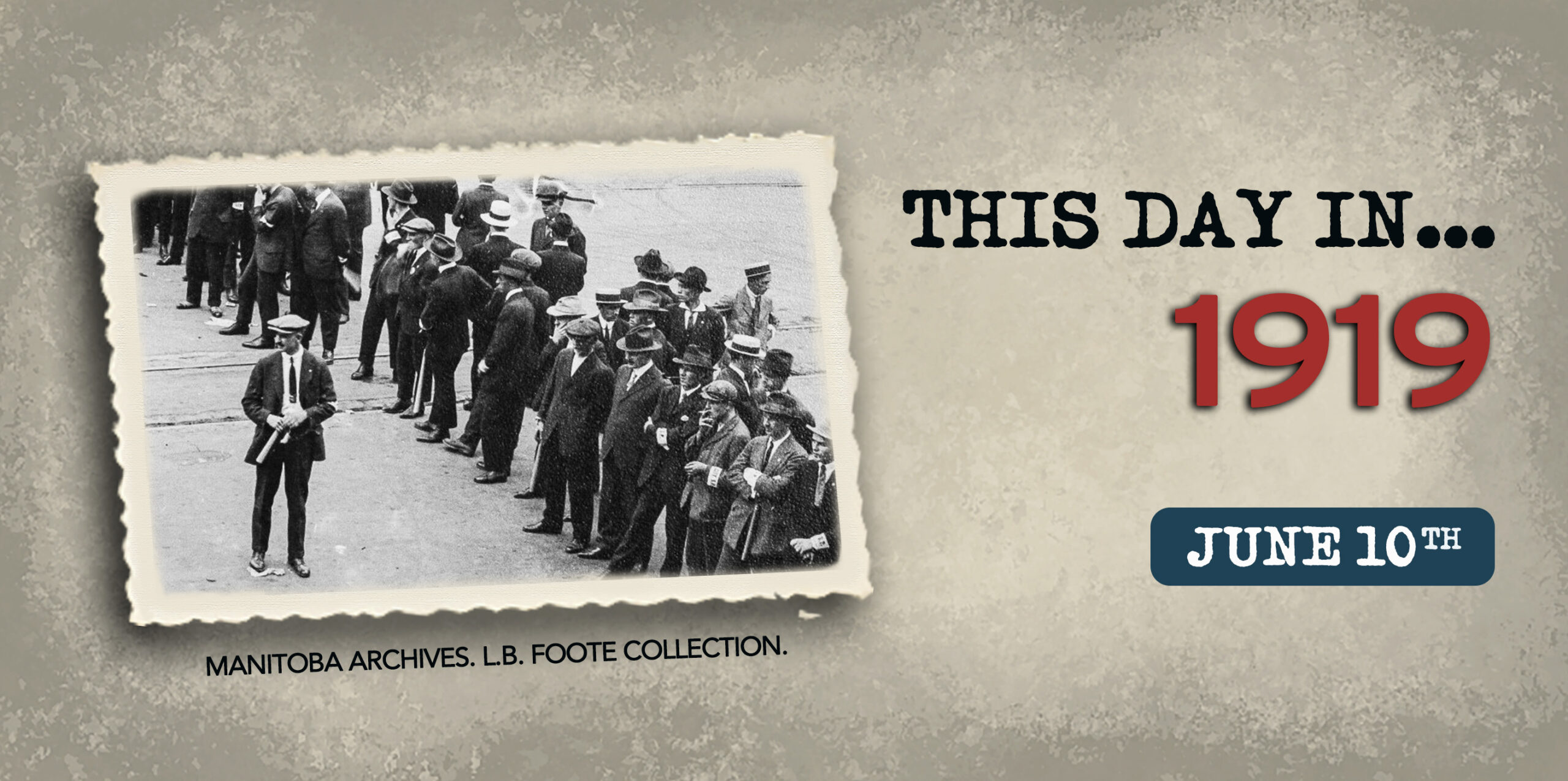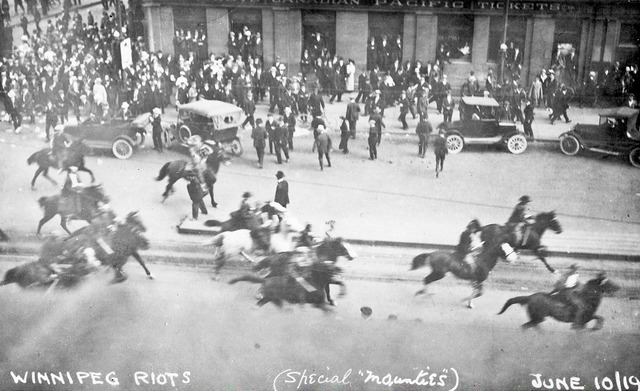

JUNE 10TH

June 10,
On this day in 1919…
After issuing a ban on parades, Mayor Charles Gray attempts to keep the peace by addressing the crowds of strikers and returned men in Victoria Park. He urges the men to avoid violence and to stop congregating in crowds.
Leaders of the Central Strike Committee, who had previously ordered all the strikers to remain calm and protest peacefully, agree to the terms, as they too believed some of the the parades had become increasingly violent and emotionally charged.
The mayor’s parade ban is upheld for a few days but talks of other meetings in Victoria Park arise once again from groups of pro-strike veterans.
Hearing the rumours, the City of Winnipeg equips the special constable’s unit with wooden clubs and horses and instructs them to maintain order throughout the city. Each of the “specials” are promised a wage of $6 per day, double the amount of the discharge allowance paid to returned soldiers.
Only a few hours after being officially sworn in as constables, a large group of armed specials heads toward Portage and Main to disperse a pro-strike crowd of strikers and veterans listening to a speech.

Soon, a riot breaks out in the street between the two groups. The specials unit charges at the crowd on horseback and begins to beat those in attendance who refuse to disperse. Attempting to defend themselves, some of the pro-strike members throw stones and bricks at the mounted riders.
One of the specials, a veteran and Victoria Cross winner, Sgt. Fred Coppins is pulled from his horse and is beaten. The riot does not fully disperse until 6 p.m. and many men on both sides leave the scene with broken bones and other injuries.
The Winnipeg Citizen blames three Austrian immigrants for the attack, but Sgt. Coppins later claims he was assaulted by a group of pro-strike veterans.
